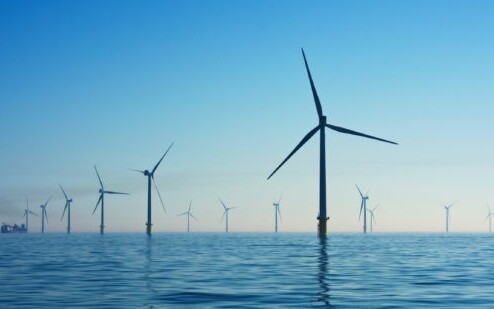Early results from a survey of fishermen who work around offshore wind projects in the United Kingdom show “more than half of those surveyed have cited a negative outcome on catches and profitability,” according to the Plymouth Marine Laboratory.
The research group is conducting a survey of fishermen through Jan. 21 to assess the impact on the fishing industry from wind power developments. Most of the fishermen responding to the survey so far fish within 6 and 12 nautical miles offshore.
They work on boats from 20 to 140 feet, using “trawls, dredges, creels, pots, jigging machines, hand lines, trammel and gill nets,” according to a Jan. 10 update from the Plymouth Marine Laboratory.
Claire Szostek, an ecosystems services scientist at the Plymouth Marine Laboratory, described some initial results from the survey, encouraging other commercial fishermen to contribute information about how they have been affected, and anticipated future impacts of wind turbine construction.
According to Szostek, “80 percent of the 43 wind farms that are currently operational or under construction are viewed as impacting fishing activity. The majority of fishers have had to use different fishing grounds due to wind farms, with a few choosing to change gear and one fisher leaving the industry as a result.”
“So far, 57 percent of respondents have cited a negative outcome on catches and profitability, and just one person has experienced a positive outcome on catches and profitability.”
Stories of how U.K. fishermen have fared with offshore wind will deeply affect how U.S. fishermen and the offshore wind industry can co-exist on the western side of the Atlantic.
In April 2019 the Responsible Offshore Development Alliance, a coalition of fishing industry groups and communities, hosted a seminar at the International Partnering Forum wind power conference in New York City. North Sea fishermen from the U.K. and Scotland told how government and industry there early on failed to consider the effects of wind power development on fishing.

“We would like to thank all the fishermen who have already completed our survey, while still encouraging any other fishers to do so. Our aim is to gain a better understanding of the impacts of offshore wind farms on commercial fishing around the UK, and how those impacts vary by size of vessel, gear type and location.”
“Initial results indicate a significant increase in spatial competition due to ‘spatial squeeze’ from wind farms, likely due to the fact that many towed gears are unable to operate safely within turbine arrays and are therefore displaced to other grounds. Knock-on effects of this are having to steam further from home to fish as a result, with an impact on operating costs.
“Most fishermen state they have experienced financial and safety issues stemming from the construction and/or operation of offshore wind farms. There may be some benefits for pot fishermen, as one person commented that the lobster fishing opportunities increased around turbines. This is currently being investigated by researchers at Aberystwyth University.”
“Of the proposed UK offshore wind farms, all are expected to impact fishermen in the future, according to survey responses so far. More than half of respondents would consider leaving the industry as a result of the new developments, with others using different fishing grounds, or potentially changing gear or taking up other employment to supplement income. Spatial competition, fisher safety, catches and profitability will all likely be impacted.”
“Additional concerns highlighted by respondents include, seafloor cables, decommissioning, damage to the seabed, particular impacts on inshore fishermen, disproportionate coverage of scallop and whelk fishing grounds, impacts on commercial vessel traffic patterns, electromagnetic effects from cables and impacts on specific fisheries and/or locations. We will be contacting respondents who indicated they are happy for us to do so for more detail on these issues.”
“The survey will remain open for the next two weeks. If you haven’t already done so, please complete the survey using the link below. Every response is valued.”
Take part in the survey here >>







